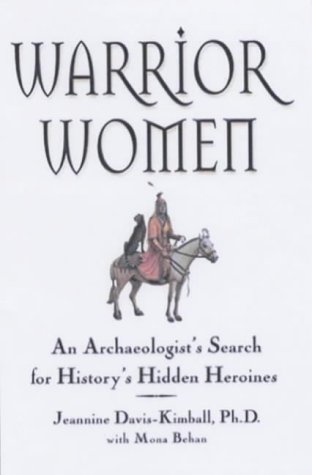Warrior Women
This first person narrative is written in a dry, scientific style, but the subject matter lends excitement, as archaeologist Davis-Kimball describes her fieldwork in Kazakstan. She studies the nomadic Sarmatians of the Steppes by excavating their kurgans and living among their Mongol descendants. Observing present-day customs gives her insight into the function of artifacts. She sees boys and girls compete in a horse race, and in the excavation, “roughly 15% of the women were buried with weapons and armor”: arrows, spears, daggers, as well as bronze mirrors for divination and sea shells containing pigment for body paint.
In Afghanistan the author documented the excavation at the temple of Tillya Tepe. Burial mounds of six women and one man revealed gold ornaments of a goddess riding a lion and a priestess flanked by winged griffins. After the museum in Kabul was taken over by the Taliban, the Tillya Tepe gold went missing.
Tracing the spread of matriarchy, in Turkey she touches on the Enarees, eunuch priests devoted to Cybele. In Ireland she describes the Sheela-na-gig, a powerful Celtic stone totem of female sexuality, which was incorporated into the walls of 12th Century churches. She is most at home discussing the nomadic tribes of Asia, as when she traces the family tree of Genghis Khan and shows the rule of qatuns, or queens, through several generations.
Davis-Kimball depicts a society where women were allowed to flourish according to their talents and many achieved the pinnacle. Her book is a valuable resource and her findings will transform our understanding of the ancient world.










